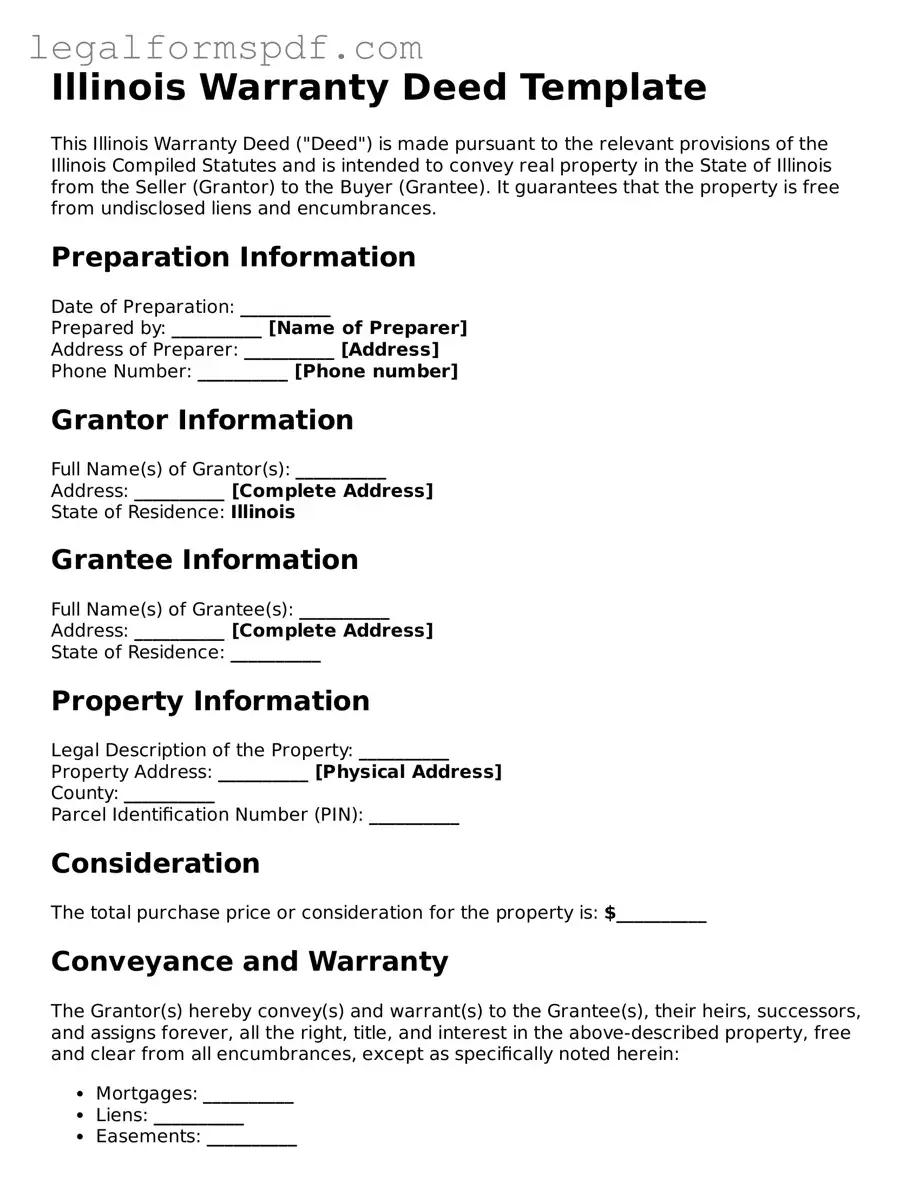Illinois Warranty Deed Template
This Illinois Warranty Deed ("Deed") is made pursuant to the relevant provisions of the Illinois Compiled Statutes and is intended to convey real property in the State of Illinois from the Seller (Grantor) to the Buyer (Grantee). It guarantees that the property is free from undisclosed liens and encumbrances.
Preparation Information
Date of Preparation: __________
Prepared by: __________ [Name of Preparer]
Address of Preparer: __________ [Address]
Phone Number: __________ [Phone number]
Grantor Information
Full Name(s) of Grantor(s): __________
Address: __________ [Complete Address]
State of Residence: Illinois
Grantee Information
Full Name(s) of Grantee(s): __________
Address: __________ [Complete Address]
State of Residence: __________
Property Information
Legal Description of the Property: __________
Property Address: __________ [Physical Address]
County: __________
Parcel Identification Number (PIN): __________
Consideration
The total purchase price or consideration for the property is: $__________
Conveyance and Warranty
The Grantor(s) hereby convey(s) and warrant(s) to the Grantee(s), their heirs, successors, and assigns forever, all the right, title, and interest in the above-described property, free and clear from all encumbrances, except as specifically noted herein:
- Mortgages: __________
- Liens: __________
- Easements: __________
- Restrictions: __________
Acknowledgment
This document was prepared by __________ [Name of Preparer] who is neither an attorney nor a party to this conveyance. Using this template does not substitute for legal advice.
Signatures
In witness whereof, the parties have executed this Deed on the date written below.
Grantor Signature: __________
Date: __________
Grantee Signature: __________
Date: __________
Notary Acknowledgment
State of Illinois, County of __________: On __________ [Date], before me, __________ [Notary's Full Name], a notary public, personally appeared __________ [Name(s) of Signatory(ies)], known to me (or satisfactorily proven) to be the person(s) whose name(s) is/are subscribed to the within instrument, and acknowledged that he/she/they executed the same for the purposes therein contained.
In witness whereof, I hereunto set my hand and official seal.
Notary Public Signature: __________
My Commission Expires: __________
